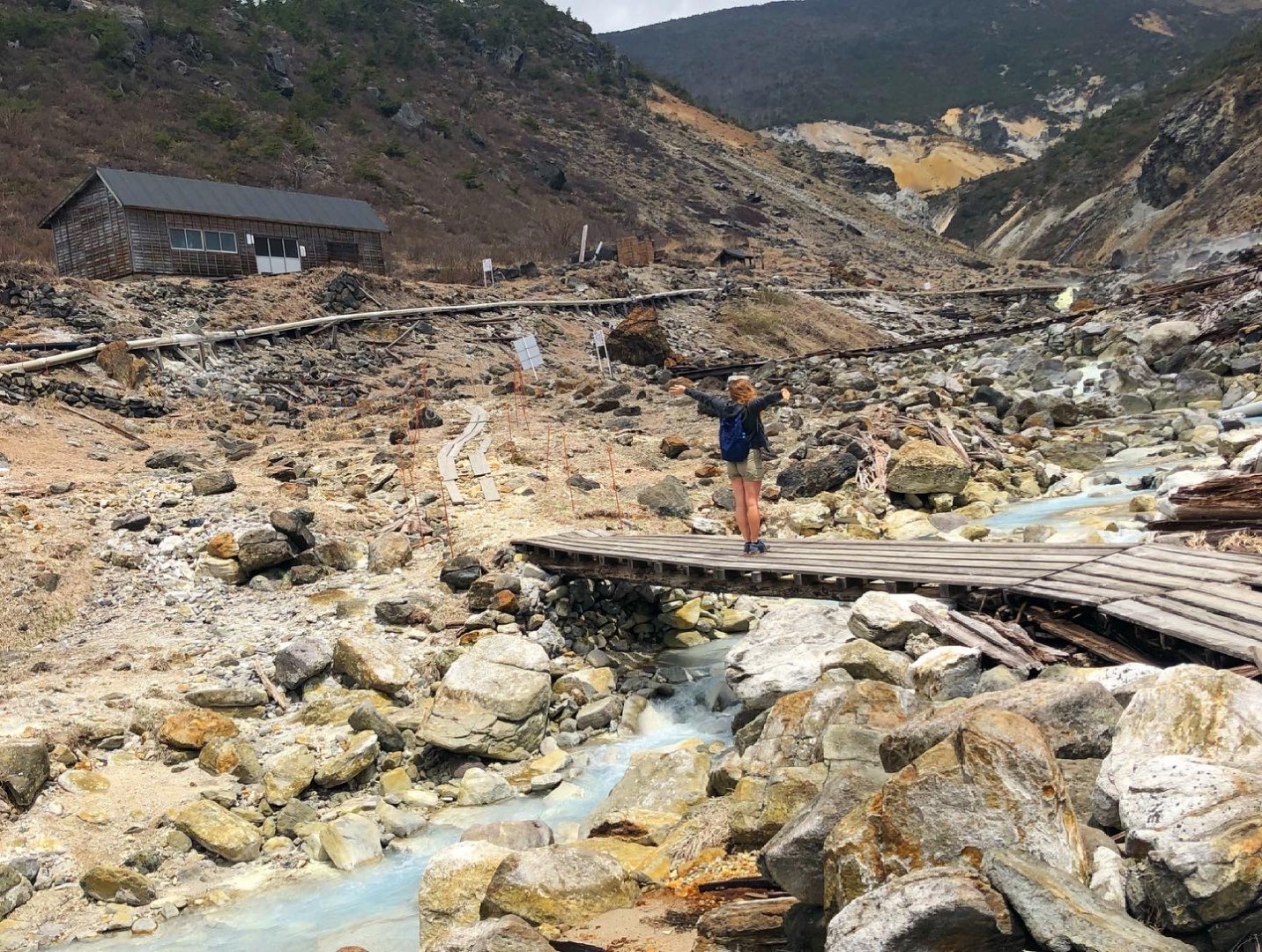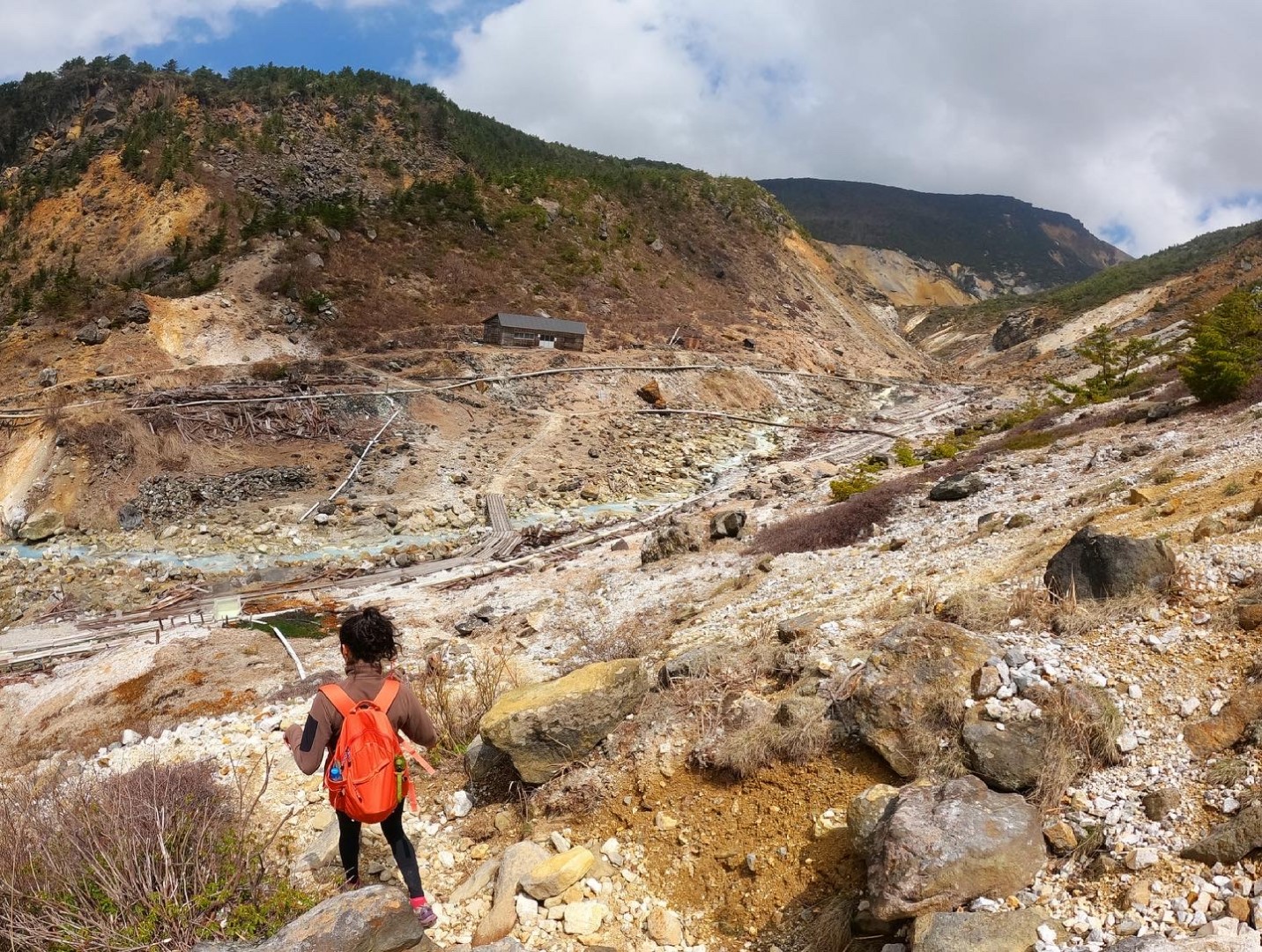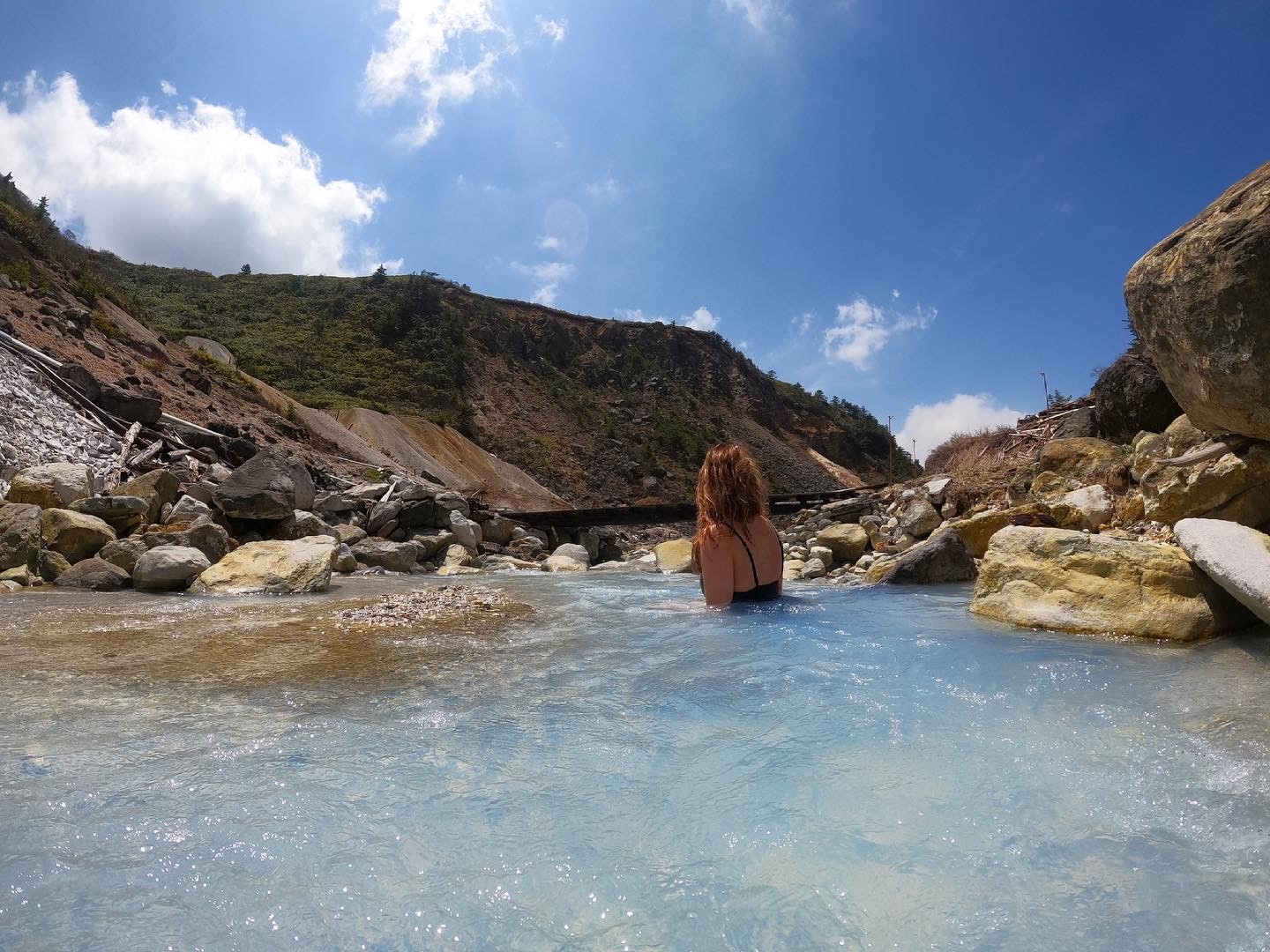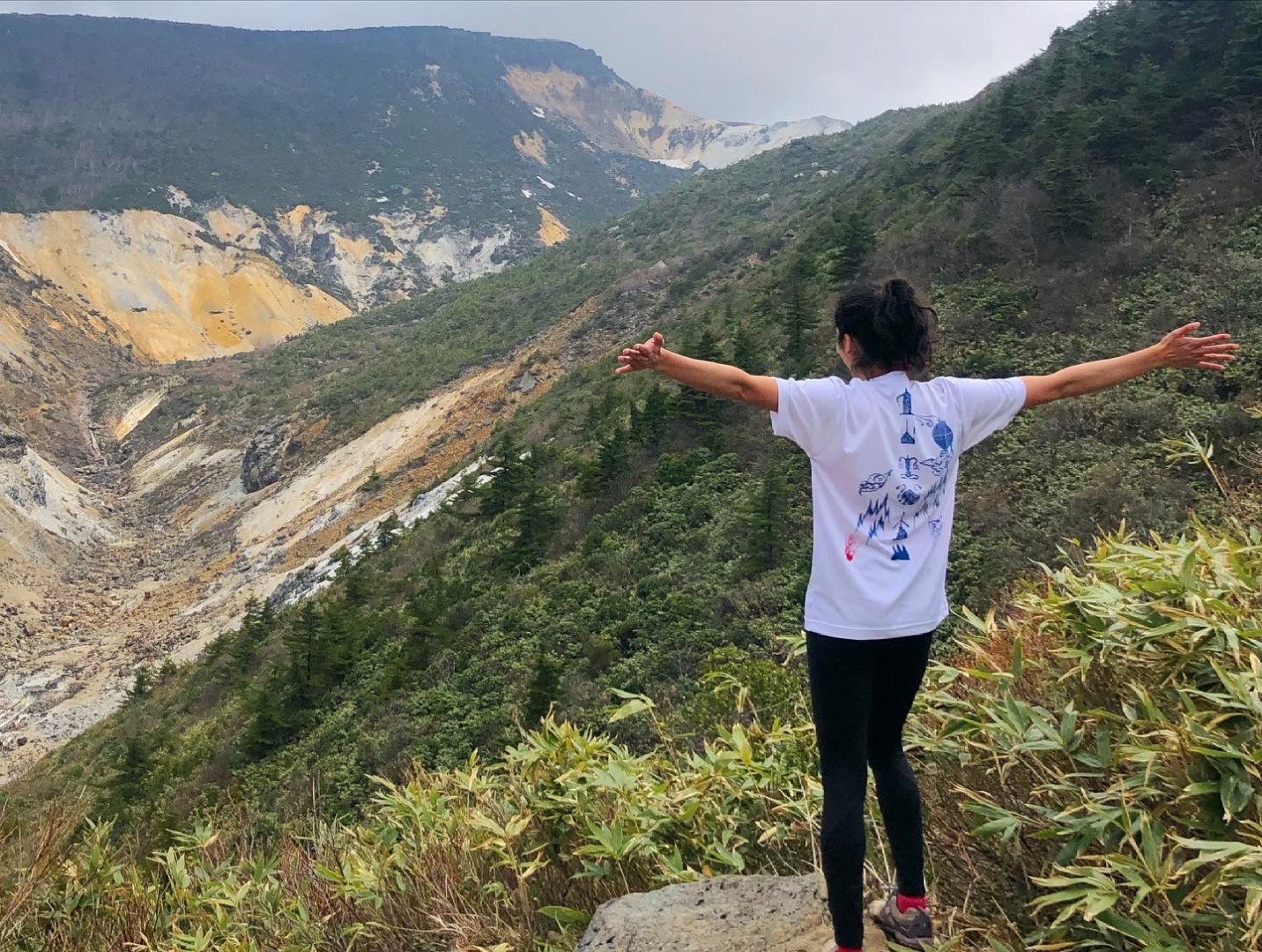
The Extreme Onsen: Nakanosawa-numajiri Onsen
The greatest wild onsen in Japan? Maybe the world? This massive onsen river in the mountains is the largest of its kind in the entire country! With the help of a professional guide, visitors can traverse unique volcanic terrain to reach this extreme onsen river in the mountains. Bathing in the water here is thought to have many health benefits, as well.
If you are interested in doing this hike, tours can be booked through our tours page.

Poisonous Volcanic Gases and Safety (IMPORTANT!)
First of all: SAFETY.
Completing this hike is approximately a two hour round trip. It has several stretches of difficult and potentially dangerous terrain. The main danger is that, since Mt. Adatara is a volcano, it is constantly releasing poisonous gases. These sometimes accumulate to dangerous and deadly levels that can cause fainting and even death. Fortunately, the professional guides are available and trained with the tools necessary to safely guide you on your journey.

The approach
The hike is beautiful, with views of a massive waterfall and the surrounding mountains.
Tunnels of trees reminded me of the entryway to a mysterious world. As you get higher, the trail slopes downwards on either side, revealing panoramic views of the surrounding area. Suddenly, you can see the terrain has changed up ahead from green forest to volcanic stones of white and red. This was once the site of a violent volcanic eruption, and the thought of that feels outlandish as the mountain is peacefully quiet.

Descending into the volcanic valley
The trail drops steeply into the valley, where shadows preserve small pockets of winter snow well into the spring months, something that is important to consider if you are visiting in spring. (Vising in winter would be extremely dangerous and is prohibited.)
As you continue, the trail can be difficult to identify due to plant overgrowth, the remote nature of this trail and onsen can make it difficult to keep the path clear. When I visited, I was grateful for my guide who kindly helped me cross the large pockets of snow and ice as well as the sections where bamboo shoots had encroached on the trail, making it difficult to pass.
As you descend deeper into the valley, you can appreciate the way the valley forms a bowl of reddish volcanic stone and soil. Unfortunately, this unique shape is what can contribute to the accumulation of fatal levels of poisonous gas! Our guide tested the air and conditions, and determined that we were safe to explore.

A river of warmth
The blue river of onsen water contrasted sharply with the warm tones of the volcanic landscape; it felt like we had discovered water on Mars. It was amazing how warm the water stayed despite being so exposed to the cool spring air. Wooden channels split off from the river - this onsen water flows through these to underground pipes and fills the baths at eleven different onsen hotels nearby, where it can be enjoyed by guests who want to experience the health benefits without the need to go hiking.

Bathing
Bathing in the onsen water is thought to have medicinal benefits. The water has a pH of 2.1 that is comparable to lemons! It is unique in Japan as the largest amount of hot spring water to come from one source, the “Numajiri Motoyu”. So if you choose to visit, I hope you will bathe in the water here and experience the refreshing effects of this onsen!

Disclaimer:
We cannot provide the exact trail information for this hike due to the dangerous nature of poisonous volcanic gases in the area, which have been fatal to some hikers. You may find information about the trail online, likely referencing a different version of the trail that is illegal, and crosses over protected land. In order to experience this beautiful and unique environment in a safe and respectful way, we encourage visitors to hire guides or visit as a part of tours that include guides. Unfortunately, some have chosen not to hire a guide, resulting in a number of casualties on the mountain. Please help us to avoid further tragedies and do not attempt this hike without an experienced guide or encourage others to do so. Thank you for your cooperation.
Taxi Service
There are reservable taxis available to take you from Fukushima Station to the meeting point at 'cafe&activity nowhere'. The price is 33,100 yen (overall) for trips of 1-3 people, and 49,900 yen for a larger taxi carrying 4-8 people. Taxis will be dispatched one hour prior to the start of the tour, and will pick you up from the cafe after the hike is complete. Please be aware that reserved taxis do not depart from the regular taxi rank but slightly to the right (when facing the taxi rank) at a specific pick-up spot for guests with reservations.
Ready to take the plunge? The Extreme Onsen experience is available here!


